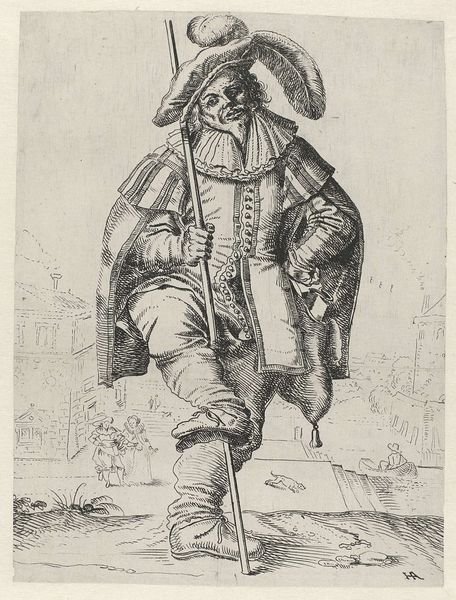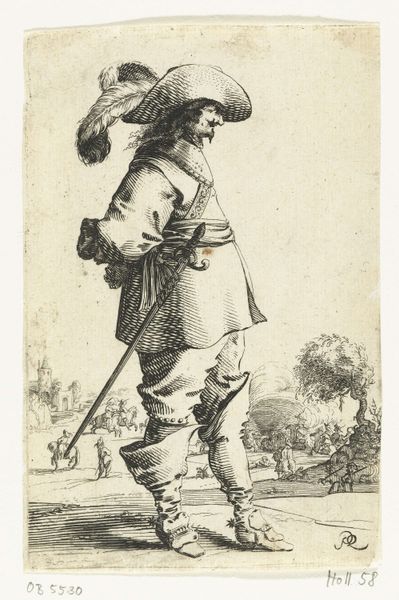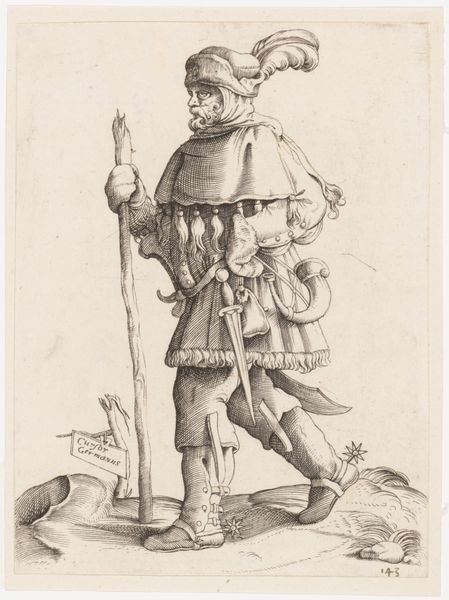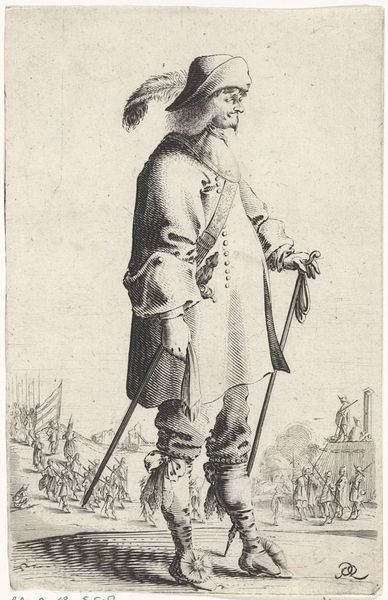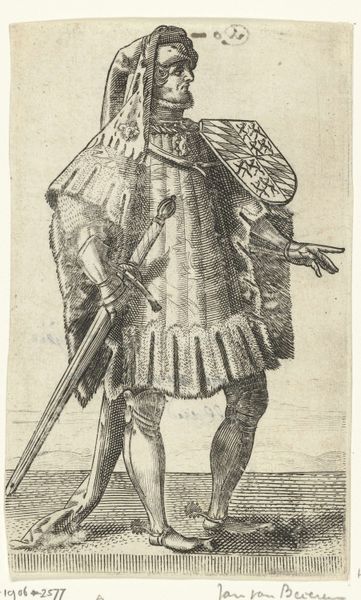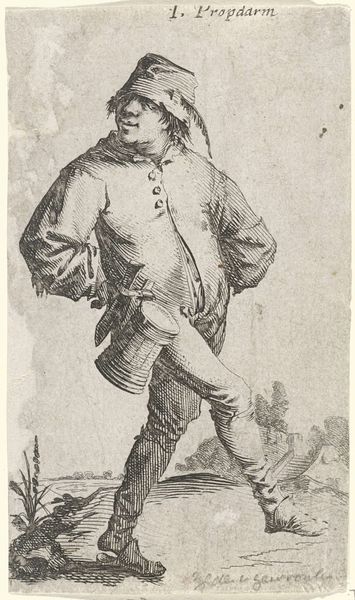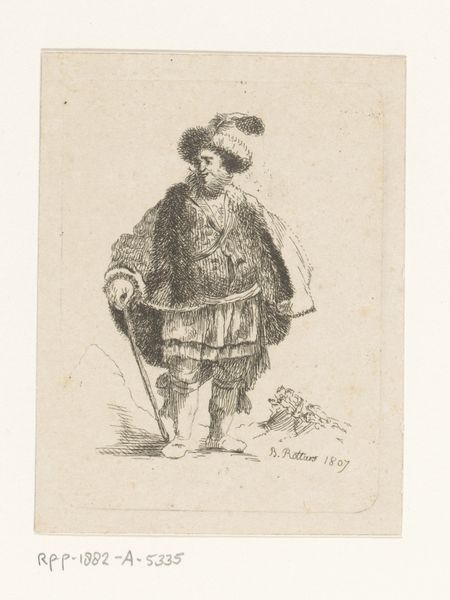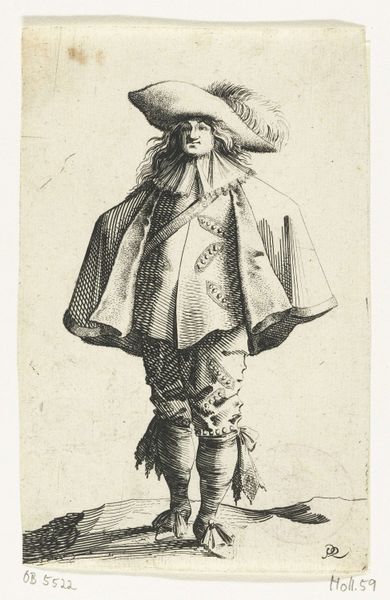
print, etching
#
portrait
#
baroque
# print
#
etching
#
figuration
#
genre-painting
Dimensions: height 144 mm, width 96 mm
Copyright: Rijks Museum: Open Domain
Salomon Savery created this print, "Staaande cavalier met cape," using etching, a technique that democratized image-making in the 17th century. Etching allowed for more fluid lines than engraving. The artist covers a metal plate with a wax resist, draws through it with a needle, then immerses the plate in acid, which bites away the exposed lines. This process allowed Savery to create multiple identical images to circulate among a growing public audience. Look at the detail in the cavalier's clothing. The lines describe the textures of fabric, feathers, and leather. This wasn't just about aesthetics; fashion played a key role in defining social status. Prints like these reflected an increasingly market-based society, where status could be bought and sold. Consider the labor involved in producing the etching plate, printing the image, and distributing it. These weren't traditional "art" materials, but products of commerce that, when put in the hands of a skilled etcher like Savery, could capture the spirit of an era.
Comments
No comments
Be the first to comment and join the conversation on the ultimate creative platform.
